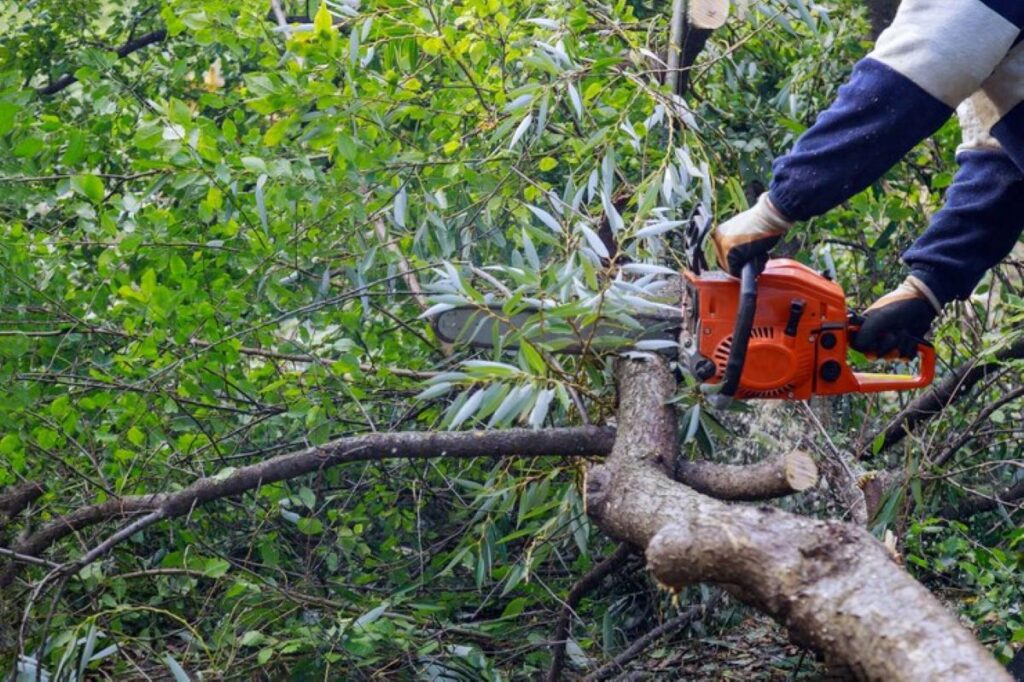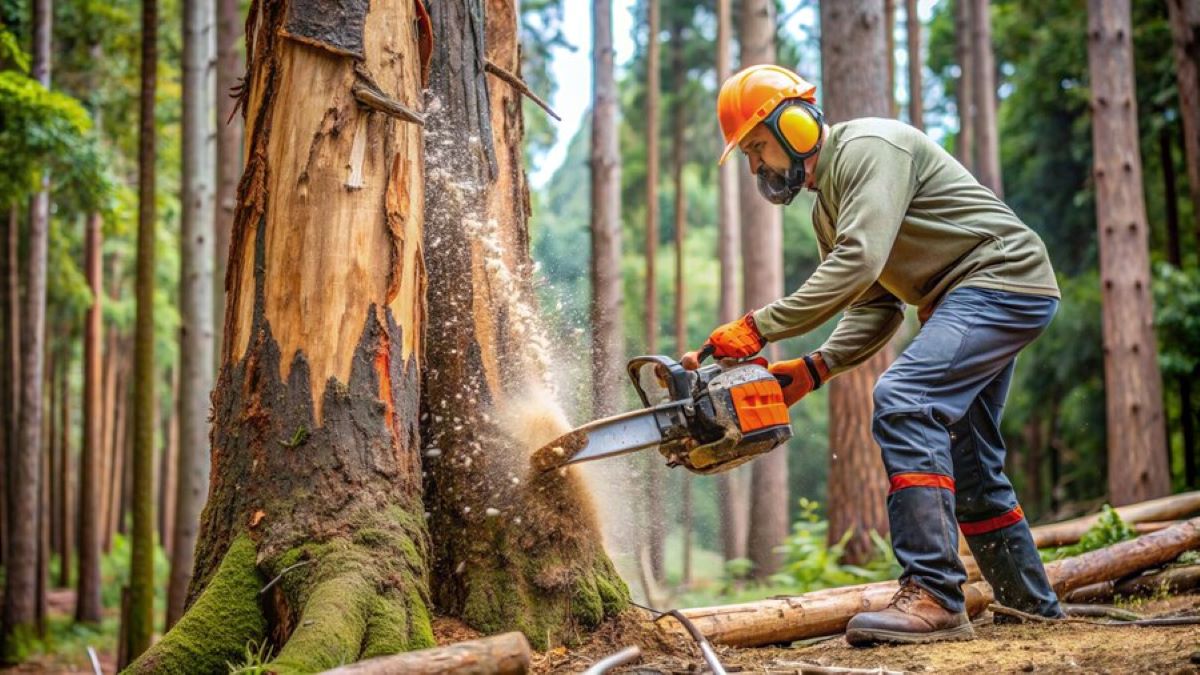Removing a tree can be a significant undertaking, both in terms of effort and expense. Understanding the costs involved in tree removal is essential for homeowners and property managers alike. Various factors influence the total price, and being aware of these can help in budgeting for the project. This article delves into the various elements that contribute to tree removal costs.
Understanding Tree Removal Costs
Tree removal costs can vary widely based on several factors. On average, homeowners might expect to pay anywhere from £300 to £1,500 for tree removal. However, this is a broad estimate, and the final price can fluctuate based on specific circumstances.
Average Cost Breakdown
The average tree removal cost is influenced by the size of the tree, its location, and the complexity of the job. For instance, smaller trees (up to 10 feet) can often be removed for as little as £100, while larger trees (over 60 feet) may cost upwards of £1,500. Additionally, the height and width of the tree can significantly affect the removal process, with larger trees requiring more equipment and labour.
Aside from the tree’s size, the condition of the tree also plays a role. A healthy tree may be easier to remove than one that is dead or diseased, which might pose additional risks during the removal process. This can lead to higher costs due to the need for specialised equipment or techniques. Furthermore, if the tree has extensive root systems or is situated on sloped terrain, the removal process can become even more challenging and time-consuming, further impacting the overall cost.
Location and Accessibility
The location of the tree is another crucial factor. Trees situated in hard-to-reach areas, such as near buildings, power lines, or fences, may require additional precautions. This can increase both the time and cost of the removal. In urban settings, where space is limited, tree removal can become even more complicated, necessitating the use of cranes or other specialised equipment.
Moreover, access to the site can influence costs. If the removal team needs to navigate narrow pathways or utilise additional equipment to reach the tree, this may lead to increased labour costs. Additionally, local regulations and permits may also come into play, particularly in conservation areas or locations with protected trees. Homeowners should be aware that obtaining the necessary permissions can add to the time and expense of the project, as well as potentially delaying the removal process if any legal hurdles arise.
Furthermore, the time of year can impact both the cost and the feasibility of tree removal. For example, winter is often considered the best time for tree removal, as trees are dormant and the ground is typically firmer, making access easier. However, scheduling a removal during peak seasons, such as spring or summer, may lead to higher prices due to increased demand for tree services. Homeowners should consider these seasonal factors when planning their tree removal to ensure they receive the best possible service at a reasonable price.
Factors Influencing Tree Removal Costs
Several specific factors can affect the overall cost of tree removal. Understanding these can help homeowners make informed decisions when budgeting for tree care.
Tree Size and Type
The size of the tree is one of the most significant determinants of removal costs. As mentioned earlier, smaller trees are generally less expensive to remove. However, the type of tree also matters. Certain species, like oak or pine, may have denser wood, making them more challenging to cut down and therefore more expensive to remove.
Additionally, some trees have extensive root systems that can complicate removal. If the roots are deep and widespread, this can lead to further costs associated with stump grinding or removal.

Health and Condition of the Tree
The health of the tree can significantly impact the removal process. A tree that is dead or dying may be more hazardous to remove, requiring additional safety measures. In contrast, a healthy tree may be easier to manage, leading to lower costs.
Moreover, if the tree is infested with pests or diseases, this could necessitate special handling or disposal methods, further increasing the overall cost. It is essential to assess the tree’s condition before proceeding with removal to avoid unexpected expenses.
Disposal and Cleanup
After a tree is removed, there is often debris left behind. The cost of disposal and cleanup can vary based on the amount of wood and branches that need to be removed. Some tree removal services include disposal in their initial quote, while others may charge extra for this service.
Homeowners may also choose to keep the wood for firewood or other uses, which could reduce disposal costs. However, this option may require additional effort in terms of cutting and splitting the wood.
Additional Costs to Consider
In addition to the primary costs associated with tree removal, there are several other expenses that homeowners should be aware of. These can include stump removal, permits, and potential landscaping repairs.
Stump Removal
Removing a tree stump can add a significant amount to the overall cost. Stump removal can range from £50 to £300, depending on the size and depth of the stump. Homeowners may opt for stump grinding, which is often less expensive than complete removal. However, grinding the stump leaves the roots in the ground, which may lead to future complications.
It’s important to consider whether the stump will interfere with landscaping or future construction plans. If so, investing in its removal may be worthwhile.
Permits and Regulations
In some areas, homeowners may need to obtain permits before removing a tree, particularly if it is a protected species or located in a conservation area. The cost of permits can vary, and failing to secure the necessary permissions can result in fines or legal complications.
Before proceeding with tree removal, it is advisable to check local regulations to ensure compliance. This can help avoid unexpected costs and delays in the removal process.
Landscaping and Repairs
After a tree is removed, the surrounding area may require landscaping or repairs. This can include filling in holes, reseeding grass, or planting new trees or shrubs. The costs for these services can vary widely based on the extent of the work needed.
Homeowners should factor in these potential costs when budgeting for tree removal. It may be beneficial to consult with a landscaping professional to assess the necessary steps following the removal.
Choosing the Right Tree Removal Service
Selecting a reputable tree removal service is crucial for ensuring the job is done safely and efficiently. The choice of service can also impact the overall cost of tree removal.
Research and Recommendations
When searching for a tree removal service, it is advisable to conduct thorough research. Seek recommendations from friends, family, or neighbours who have previously used tree removal services. Online reviews and ratings can also provide valuable insights into the quality of service offered by different companies.
It is essential to choose a company that is fully insured and licensed, as this can protect homeowners from liability in case of accidents or damage during the removal process.

Obtaining Multiple Quotes
Before making a final decision, obtaining multiple quotes from different tree removal services can be beneficial. This allows homeowners to compare prices and services offered. However, it is essential to consider the overall value rather than just the lowest price. The cheapest option may not always provide the best service.
When requesting quotes, ensure that they include a detailed breakdown of all costs involved. This transparency can help avoid surprises later on.
Conclusion
Tree removal can be a significant investment, and understanding the various factors that influence costs is essential for effective budgeting. From the size and condition of the tree to additional expenses like stump removal and landscaping, each element plays a role in the overall price.
By conducting thorough research, obtaining multiple quotes, and considering all associated costs, homeowners can make informed decisions about tree removal. Ultimately, investing in professional tree removal services can enhance the safety and aesthetics of a property, making it a worthwhile endeavour.
Related : 5 Must-Know Tips for Safe Palm Tree Removal on Your Property


